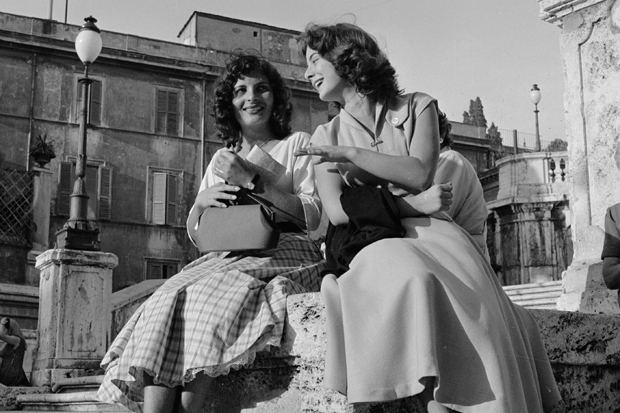‘You understand, Lenú, what happens to people: we have too much stuff inside and it swells us, breaks us.’ The line comes from the third of Elena Ferrante’s Neapolitan novels, but it offers a fair summary of a sequence that concludes in this fourth volume. Set in Italy between the 1950s and the present, and documenting the turbulent friendship between two women from the same working-class quarter of Naples, these books by a still-unidentified pseudonymous writer rattle like pressure-cookers with anger, outrage, frustration, jealousy and spleen. With every new instalment, their Paperchase-pastel covers (book four features a dreadful illustration of two little girls dressed like fairies) seem more and more like the work of a designer crossing some event horizon of fabulous irony.
Despite the expansive list of dramatis personae at the front, The Story of the Lost Child will be mostly incomprehensible to anyone who hasn’t followed Ferrante’s saga from the beginning. It opens in the mid-1970s, during the period of violent political extremism known in Italy as the anni di piombo. Elena Greco, the novelist who narrates the sequence, is preparing to leave her husband and young children in Florence and embark on an affair with her childhood flame, Nino. This also means returning to Naples, where her friend Lila, the ‘restless creature with an irresistible force of attraction’ whose relationship with Elena forms the core of the book, is now a successful computer programmer. But Lila also remains neck-deep in the murky criminal world of ‘the neighbourhood’ where both women grew up and, as their lives begin to merge and overlap once again, decades of personal and political scores remain to be settled.
Ferrante’s striking approach to narrative time takes centre stage here. In an earlier volume, an erotically charged account of a single summer expanded to fill almost a third of the book; here Ferrante compresses almost 30 years of her characters’ middle age into a single volume, which gives the book an unsettling mimetic air of rushing towards conclusion.
As with previous instalments, the relationship between Lila and Elena is mirrored in a set of fissional pairings that run throughout the novel. The mandarin reflectiveness of Elena’s literary Italian rubs up against the volcanic hostility of Neapolitan dialect, the shifting relationships in Italian party politics are contrasted with the opaque networks of Cammorista obligation and control, and the demands of women’s domestic lives are balanced against their achievements and ambitions in the public sphere. Ferrante’s prose is compellingly accurate at the molecular level of emotion where love and friendship shade into jealousy, manipulation and Schadenfreude, but it’s this narrative organisation that fascinates.
Baggy and elastic at times, possessed of ferocious pace and discrimination at others, these books are page-turners that also aspire to reflect what the protagonist calls ‘the disjointed, unaesthetic, illogical, shapeless banality of things’. It’s a startling combination.






Comments